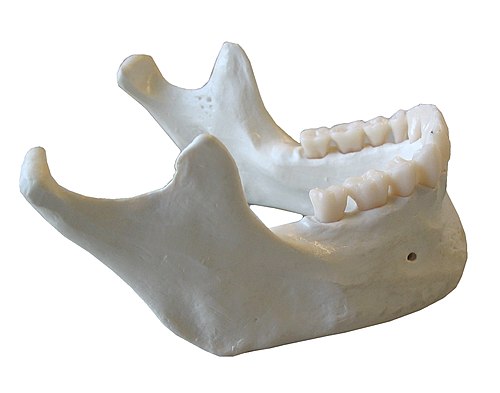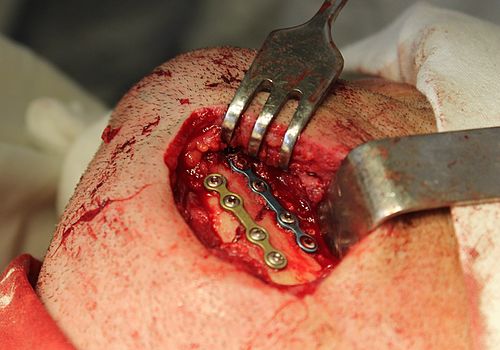Mandiblenoun
The lower jaw, especially the lower jawbone.
Mandiblenoun
One of a pair of mouthparts of an arthropod, designed for holding food.
Mandiblenoun
The bone, or principal bone, of the lower jaw; the inferior maxilla; - also applied to either the upper or the lower jaw in the beak of birds.
Mandiblenoun
The anterior pair of mouth organs of insects, crustaceaus, and related animals, whether adapted for biting or not. See Illust. of Diptera.
Mandiblenoun
the lower jawbone in vertebrates; it is hinged to open the mouth
Mandiblenoun
the jaw or a jawbone, especially the lower jawbone in mammals and fishes.
Mandiblenoun
either of the upper and lower parts of a bird's beak
Mandiblenoun
either half of the crushing organ in an arthropod's mouthparts.
Mandible
In anatomy, the mandible, lower jaw or jawbone is the largest, strongest and lowest bone in the human facial skeleton. It forms the lower jaw and holds the lower teeth in place.
Maxillanoun
Either of the two bones that together form the upper jaw.
Maxillanoun
Arachnid mouthpart
Maxillanoun
The bone of either the upper or the under jaw.
Maxillanoun
One of the lower or outer jaws of arthropods.
Maxillanoun
the upper jawbone in vertebrates; it is fused to the cranium
Maxillanoun
the jaw or jawbone, specifically the upper jaw in most vertebrates. In humans it also forms part of the nose and eye socket.
Maxillanoun
(in many arthropods) each of a pair of mouthparts used in chewing.
Maxilla
The maxilla (plural: maxillae ) in vertebrates is the upper fixed (not fixed in Neopterygii) bone of the jaw formed from the fusion of two maxillary bones. In humans, the upper jaw includes the hard palate in the front of the mouth.










